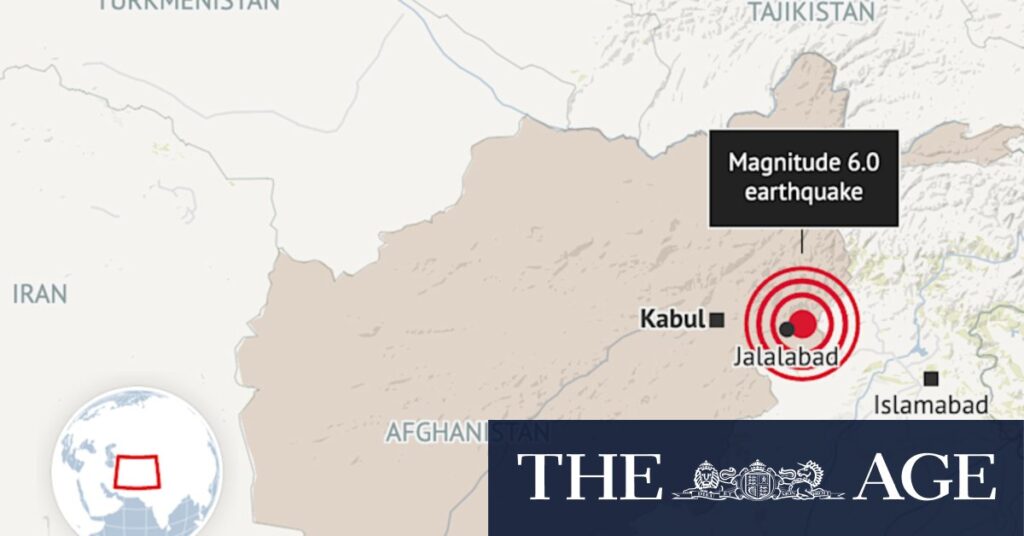
Kabul: In one of the deadliest earthquakes to hit Afghanistan in recent history, more than 800 people have been confirmed dead and at least 2,800 injured. The 6.0 magnitude tremor struck near Jalalabad around midnight local time, at a depth of 10 kilometers, exacerbating the challenges faced by rescue teams trying to reach remote areas.
The disaster further burdens Afghanistan’s Taliban-led administration, which is already dealing with a myriad of crises, including a significant reduction in foreign aid and the mass deportation of Afghans from neighboring countries. The rough mountainous terrain and adverse weather conditions have hindered rescue operations, making it difficult to deliver aid to the affected regions.
Call for International Assistance
Sharafat Zaman, spokesperson for the health ministry in Kabul, has urgently appealed for international assistance to manage the aftermath of the earthquake. “We need it because here lots of people lost their lives and houses,” he told Reuters, underscoring the dire need for support.
The appeal highlights the precarious position of Afghanistan, a nation that has been grappling with ongoing instability and economic challenges. The Taliban administration, which took control in August 2021, has been struggling to gain international recognition and secure much-needed financial aid.
Historical Context and Challenges
Afghanistan is no stranger to seismic activity, with its location on the Eurasian and Indian tectonic plates making it prone to earthquakes. Historically, the country has faced several devastating quakes, including the 1998 earthquake in Takhar and Badakhshan provinces, which claimed thousands of lives.
The current disaster has drawn comparisons to previous earthquakes, but the political and economic context has changed significantly. The reduction in international aid since the Taliban takeover has left the nation more vulnerable to natural disasters. The lack of resources has hampered the government’s ability to respond effectively to emergencies, leaving many communities to fend for themselves.
Expert Opinions and Future Implications
Experts warn that the earthquake could have long-term implications for Afghanistan’s already fragile economy. The destruction of infrastructure and homes will require substantial investment to rebuild, at a time when the country’s financial resources are severely limited.
According to a report by the United Nations Office for the Coordination of Humanitarian Affairs (OCHA), Afghanistan is facing one of the world’s largest humanitarian crises, with nearly half of the population in need of urgent assistance. The earthquake has only intensified the need for international support.
“The international community must step up efforts to provide immediate relief and long-term assistance to help Afghanistan recover from this tragedy,” said a spokesperson for OCHA.
Meanwhile, the Afghan government is attempting to coordinate relief efforts with the limited resources at its disposal. The focus remains on providing immediate aid to the affected areas, including food, medical supplies, and temporary shelter for those who have lost their homes.
Looking Ahead
The earthquake in Jalalabad serves as a stark reminder of the vulnerabilities faced by Afghanistan. As the nation continues to navigate its complex political and economic landscape, the need for a robust disaster response mechanism becomes increasingly evident.
Moving forward, the international community’s role will be crucial in supporting Afghanistan’s recovery efforts. The provision of aid and resources can help mitigate the immediate impacts of the earthquake and contribute to the country’s long-term stability and resilience.
As rescue operations continue, the focus will remain on saving lives and providing relief to those affected. The coming weeks will be critical in determining the extent of the damage and the effectiveness of the response efforts.







